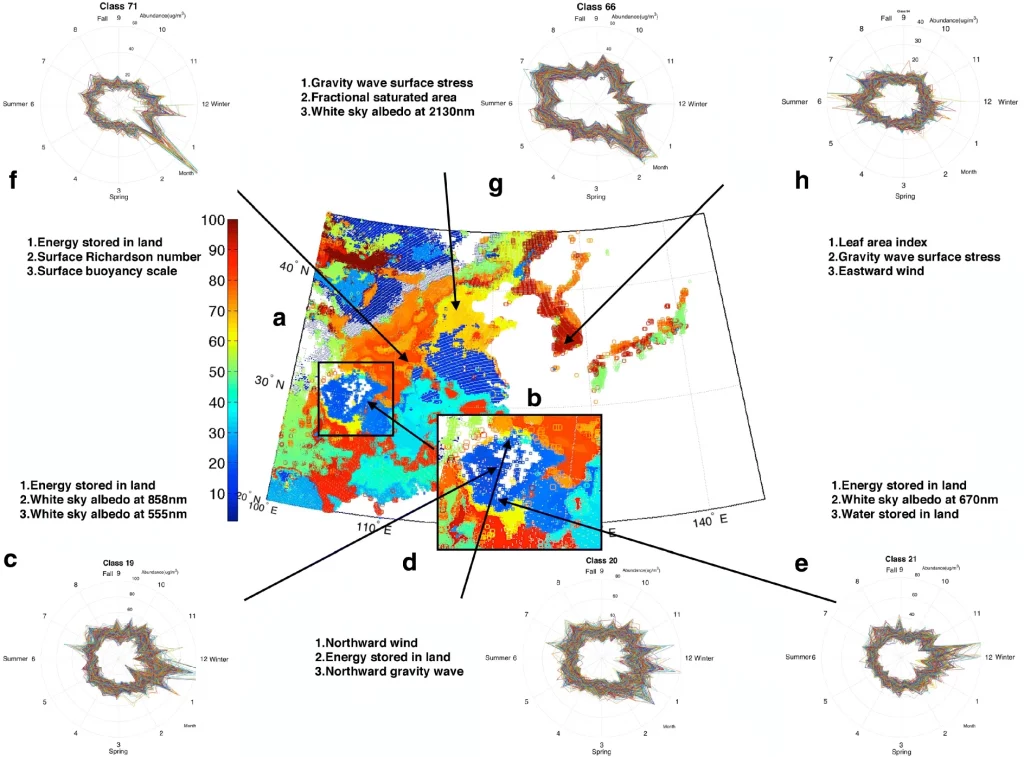Using machine learning to understand the temporal morphology of the PM2.5 annual cycle in East Asia
PM2.5 air pollution is a significant issue for human health all over the world, especially in East Asia. A large number of ground-based measurement sites have been established over the last decade to monitor real-time PM2.5 concentration. However, even this enhanced observational network leaves many gaps in characterizing the PM2.5 spatial distribution. Machine learning provides a variety of algorithms to help deal with these large spatial gaps—combining both remotely sensed and in situ observation data to estimate the global PM2.5 concentration. This study used a PM2.5 data product of six regions from the results of an unsupervised self-organizing map (SOM) with optimized ensemble learning approaches to highlight the most important meteorological and surface variables associated with PM2.5 concentration. These variables were then examined via multiple linear regression models to provide physical mechanistic insights into the morphology of the PM2.5 annual cycles.
Wu, D., Lary, D.J., Zewdie, G.K. et al. Using machine learning to understand the temporal morphology of the PM2.5 annual cycle in East Asia. Environ Monit Assess 191, 272 (2019). https://doi.org/10.1007/s10661-019-7424-1
